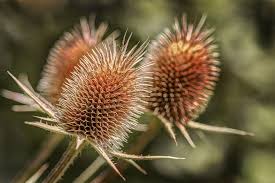There are about 134 distilleries in Scotland in a landmass that is just slightly smaller than the State of South Carolina and about the same size as the Czech Republic. Making whisky is an old art — perhaps dating back to the 11th century in Scotland, and is believed to have originated with monks who, without access to grapes, developed a fermented grain (barley) that became the popular spirit.

The “wee dram” does feature in many stories, and one of my favorites came during a visit to the Knockando Woolmill in the Spey Valley (coincidentally the largest whisky producing region in the country).

The oldest records identify the mill as the “Wauk Mill” and are dated 1784. It was (and is) a small, regional mill, rather than one of the large industrial types found elsewhere in the UK. William and Anne Grant were listed as fulling wool in local records (wauk is another name for fulling or felting).
By 1845 the mill had been sold to Simon Fraser, a local farmer and weaver, and by 1865 parish records list Alexander Smith as the owner. The A. Smith and Son Company was then operated by the same family until 1976.


Duncan Stewart, a nephew of Smith, purchased the mill in 1938 and worked there until 1976. He continues to advise mill staff and train weavers to this day.




This machine the “gig mill”, is fitted with row upon row of teasel weeds (also called fuller’s teasel) and was used in finishing blankets by raising the nap with the weeds’ sturdy spikes. The hundreds of teasel heads had to be frequently replaced as the spines wore down. Still, it was a much better process than metal combs, since the weeds “teased” the fibers from the surface without cutting or breaking them. Teasels were so widely used that they were actually planted and harvested as a commercial crop into the early 20th century.


Final finishing for the blankets was carried out in the mill’s office, where the owner’s wife sat at her blanket stitch machine. From her seat by the window, she could see who was coming down the road to visit, and so kept a good bottle of whisky at hand to offer “a wee dram” to her best customers.
A large proportion of the wool used by the mill comes from a shepherdess named Sarah-Jane Forbes (as my middle name also is Jane, I felt an immediate kinship to her, the mill, and their lovely fabrics). The mill still produces blankets, yardage of their own Strathspey tweed designs, yarn, and a number of clothing and gift items.

Looking at tweed yardage, it’s easy to imagine a professor’s jacket with elbow patches, and the hunting clothes of British royalty. That’s its later adaptation, dating back only to the 19th century. Before that these fabrics were woven at home, primarily in the Hebrides Islands off the west coast of Scotland, and also in the Highlands and Borders. Many are designated by the region where they are produced (such as Harris Tweed — woven only in the Hebrides, Saxony tweed — originating in Germany, or Borders Tweed — woven along the border between Scotland and England).


Originally tweeds were woven at home from hand-spun and dyed yarns. They were considered fabric for “peasants,” produced for its durability and warmth, and with a history dating back at least to the 18th century. Legend has it that the name “tweed” came from a misreading of the Scottish word “tweel” (Scottish word for “twill”) as tweed, thinking it was named after the river Tweed. It was then marketed in England as Tweed, and the name stuck.
In the 19th century it became fashionable for wealthy Britons to rent or buy Scottish estates for hunting and fishing parties. Adopting the practice of Scottish Highland chiefs to dress their retainers in clan tartan, the new estate owners dressed their gamekeepers and other householders in tweeds designed specifically for their use. These were known as Estate Tweeds, and the colors were chosen to serve as hunting camouflage. The difference between tartan and tweed is easily understood as an identification of kinship (clan tartan) versus an association based on land ownership (estate tweed).

Prince Albert (husband to Queen Victoria) made the estate tweed and hunting estates even more popular when he purchased the land for Balmoral Castle. This tweed was designed for the royal family, and is still used solely by them to this day.
The history of tweed is rich and long, and its continuing popularity unsurprising, given that the fabric — if woven according to historical precedent — is extremely tough and long wearing. It should be no surprise that fashion icons such as Coco Chanel incorporated tweed into her signature suit design.


But of course, it’s all about the sheep. In addition to location names, tweeds may also be named for the sheep from which they are made. The fabrics can differ as much as they yarns themselves. Cheviot tends to produce a tough and somewhat stiff yarn compared to the Shetland wool, which is both softer and fuzzier. Who knew that a very subtle and straightforward fabric would be so complicated?
Meanwhile……

I am continuing to knit away on my shawl of alpaca/rose fiber yarn. It’s slow, and I feel much more like spinning these days than knitting.
I’ve also developed some thoughts about this yarn I’ll share in an upcoming post. Mixed feelings!
Meanwhile, keep calm and knit (and spin) with gusto.